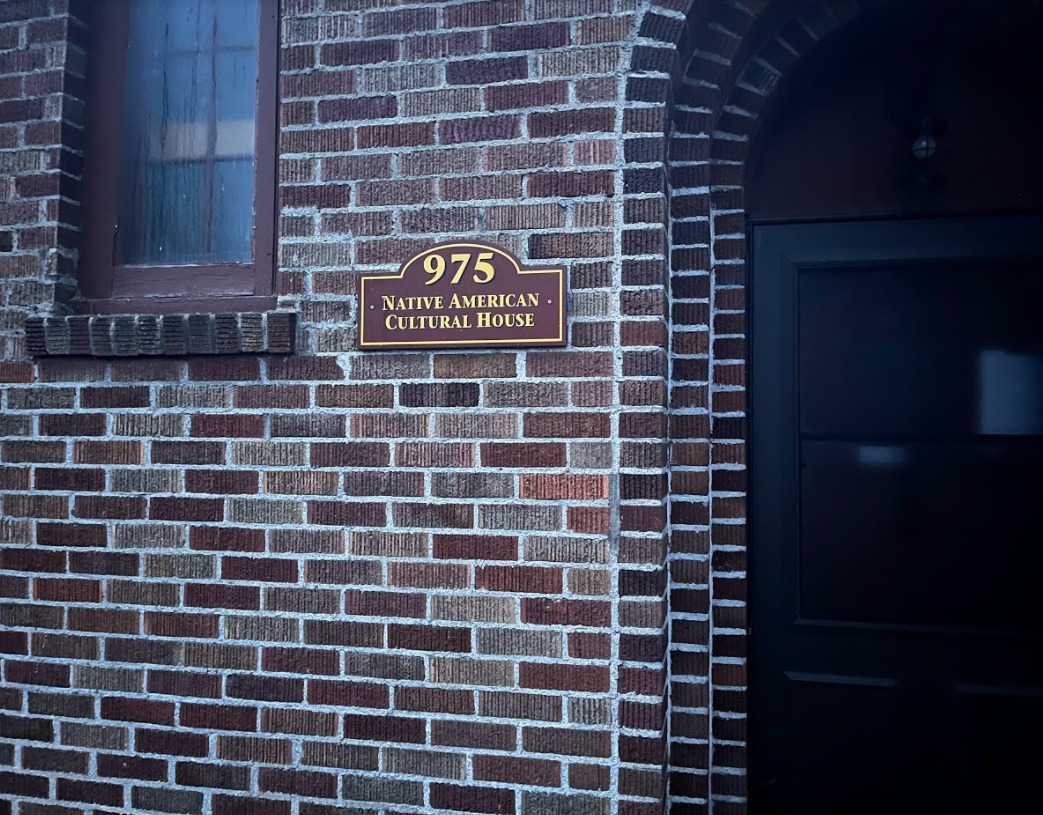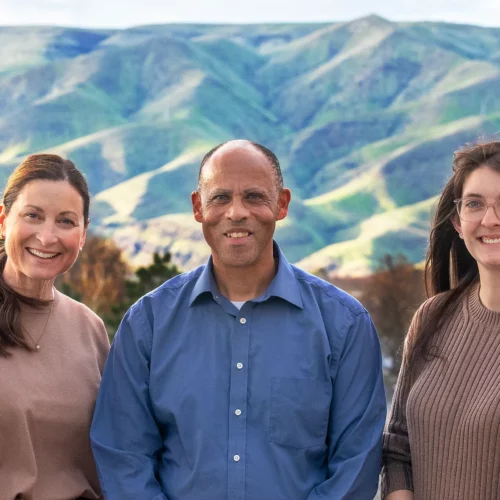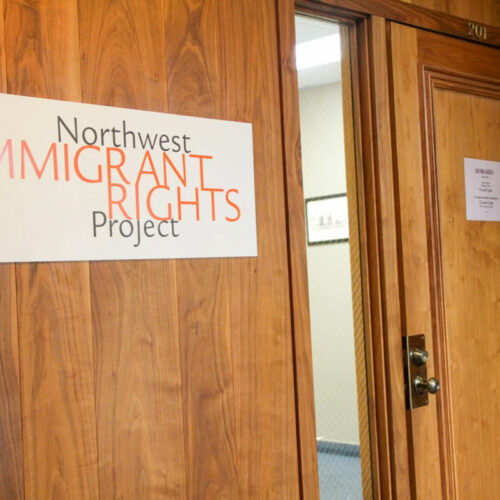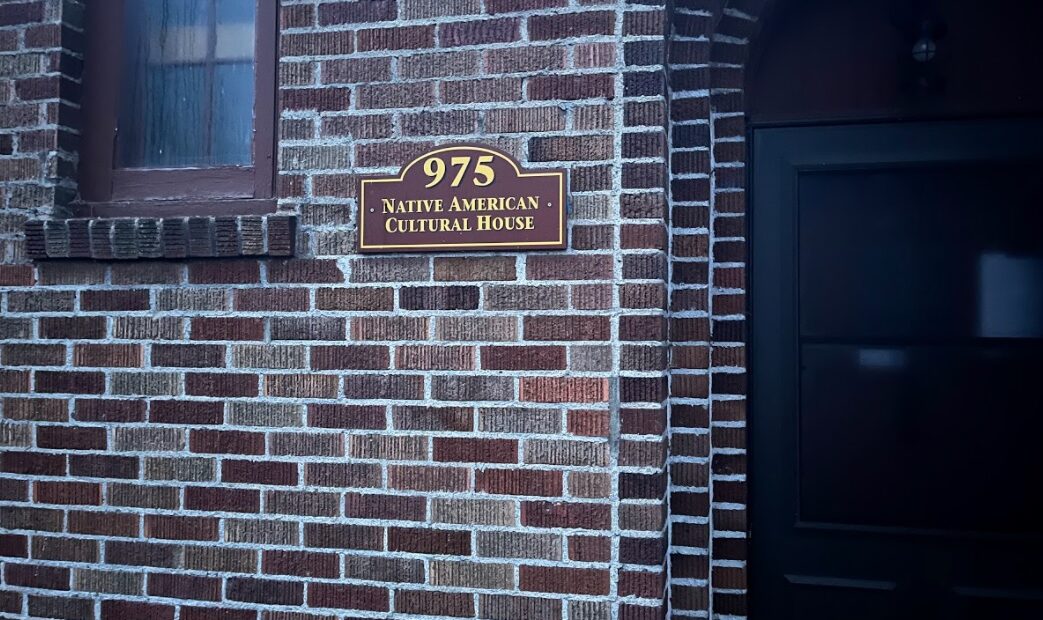
Sale Of WSU Heritage Houses Causing Controversy
Read
By Jayce Carral / Edward R. Murrow College of Communication
A crumbling stone path leads to three Tudor-style brick houses partly covered by bare overgrown trees perched on elevated ground overlooking College Hill. One street over, barely a five-minute walk from campus, stands another house in slightly better condition but with a crumbling retaining wall and two beer bottles on its lawn.
Once beacons for multicultural students, these “culture and heritage houses” are now being sold by Washington State University against the recommendation of the College Hill Association, which consists of community members who strive to improve and preserve the neighborhood.
“Those houses are the crown jewels of the College Hill Historic District,” said Allison Munch-Rotolo, chair of the College Hill Association board of directors. The three houses were listed Feb. 26 for over $500,000 each. The fourth home has not yet been listed.
In 2008, the late WSU President Elson S. Floyd designated the four properties as the Culture and Heritage Houses. During the height of their popularity from 2007-2016, multicultural groups often used the houses for events and meetings; they also held historical artifacts.
Last May, WSU’s Board of Regents wrote in a meeting agenda that they decided to sell the four houses after at least three years of unuse and deterioration.
“They’ve continued to fall into disrepair,” said Phil Weiler, vice president of marketing and communications.
Last spring, just days before its meeting, the board alerted the College Hill Association of the decision to sell, prompting the association to create a 37-page document detailing the houses’ significance to the university and neighborhood.
The document was meant to help university officials understand how and why the university first acquired the properties for $1.3 million from 2004-2006. Those purchases predated WSU’s current administration. But it is possible one of the reasons WSU pushed for the sale was because its officials do not fully understand the significance of the houses, Munch-Rotolo said.
Originally, prominent WSU professors lived in the homes, which were built in the 1920s and 30s, said Phil Gruen, associate professor with WSU’s School of Design and Construction. After their designation by Floyd, they became spaces for students of color.
“We’re dealing with groups of marginalized and underrepresented people, historically, that need to have a voice, and here was an example of that voice being given and being established,” Gruen said. “If the buildings are sold, demolished and turned into something else, I don’t think the history necessarily goes away, but the memory becomes less tangible. That would be a significant loss to the campus, the city and really to the state as a whole.”
In a July 19 letter to the Board of Regents, the association said it “would prefer WSU to retain these properties,” but if the board approves the sale, then WSU should nominate the houses for registration with Pullman’s Register of Historic Places through the city’s Historic Preservation Commission.
That could protect the houses from demolition and major renovations. Any major plans for a locally registered property would have to be approved by a review board through the commission, said Michael Houser, state architectural historian with the Washington Department of Archaeology and Historic Preservation.
But in a letter to the association last year, WSU President Kirk Schulz said the homes will not be listed with the state or local historic preservation committee.
Historic designations can place limits on the homes, which can decrease their sale price.
“We’ve just been trying to say if you do need to sell them just list them first,” Munch-Rotolo said. “That message I’m pretty sure was clear all along, and we have never been given a reply as to why they wouldn’t do that.”
Transparency with WSU has been an issue, Munch-Rotolo said, especially after years of the university telling the College Hill Association that the houses were not being considered for sale.
Rumors of a possible sale began at least as early as 2015, according to emails between Professor A.G. Rud, Floyd and Munch-Rotolo. At that time, it was not an issue of whether the university could sell the properties, but whether it should.
In 2019 and again in 2020, the university denied the homes were being sold, according to university emails. The emails said university officials would try to keep the College Hill community “in the loop.”
However, emails from ASWSU and the Board of Regents meeting agenda states talks about a sale were being had within that time frame. In a December 2020 email, former ASWSU President Curtis Cohen writes a university official said other university officials were “looking into it soon” in reference to a possible sale. WSU began discussing the sale with university stakeholders in 2018-2019, according to the May 6 Board of Regents meeting agenda.
“The university didn’t have plans to sell the homes until we did,” Weiler said.
In the same December 2020 email, Cohen said he emphasized to university leaders “that the student voice should remain present in any decisions.”
“Every year we have new leadership in ASWSU, there isn’t always consistency in opinion from one administration to the next,” Weiler said.
But previous student administrations had also been against the sale of the houses, according to a 2015 letter to the editor from former ASWSU Vice President Kyle Geiger. ASWSU expressed disapproval of a possible sale in 2017 and 2019, according to articles from the Daily Evergreen.
ASWSU President Brian Patrick learned about the houses during his busy transition into the presidency last fall. He said university officials implied the student government had no input in the decision to sell.
It was something the university had already decided on, Patrick said. As a result, ASWSU decided to put more focus on student resources that were already in place and see what new resources could be added on campus to make up for the potential loss of the four homes.
The houses were considered as a place for COVID-positive students to quarantine during the beginning of the pandemic, according to a November 2020 email from Cohen. The houses were not in use at the time university classes had moved online and few student groups were meeting. The houses were never actually used for that purpose.
Marty Dickinson, chair of WSU’s Board of Regents, wrote in a Sept. 8 letter that the houses “no longer serve our students and, as such, do not support our education mission.”
One week later, WSU Insider released an article announcing the planned sale of the houses.
Other specific multicultural spaces on campus include the Compton Union Building’s multicultural student centers and the Elson S. Floyd Cultural Center. The cultural center was meant to serve as a home for multicultural groups as the houses were “taken off the map,” said Rud, who is a distinguished professor of cultural studies and social thought in education with the WSU College of Education.
The university’s shift in focus from the houses to the center was something that happened quietly, Munch-Rotolo said. But the center is on the edge of campus as opposed to the middle of College Hill like the houses, and the space is commonly used to host larger events instead of smaller gatherings.
“We don’t know who might buy them,” Rotolo-Munch said. “There’s always the chance someone could come along and buy these and do something amazing that is really uplifting to the neighborhood that brings a new life to these houses.”
HISTORY BEHIND THE CULTURE AND HERITAGE HOUSES
WSU bought the houses for $1.3 million in a series of purchases from 2004-2006, according to the May 6 Board of Regents agenda meeting. Since then, the university has spent more than $1.5 million in renovations and maintenance, according to the Board of Regents meeting agenda. The houses held collections of art, books and music of the cultures they were dedicated to.
The houses were popular among students during Floyd’s presidency. The spaces could be reserved by students, Munch-Rotolo said.
The Claudius O. and Mary W. Johnson House was built for the Johnsons in 1933 and is located on 935 NE B St. It was later established as the first Heritage House, called the Diversity House, by Professor Talmadge Anderson, who was a prominent leader and Black Studies scholar on the WSU campus from 1970-1995. Under Floyd, the house was redesignated as the Talmadge Anderson Heritage House in honor of Anderson. The house currently holds historic collections that will be moved to a different building on campus. It was listed for $535,000. WSU paid $320,000 for the house in 2005.
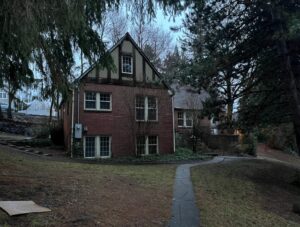
The Claudius O. and Mary W. Johnson House, located 935 NE B St., was designated as the Talmadge Anderson Heritage House in honor of Professor Talmadge Anderson. It was listed for $535,000/ Photo by Jayce Carral
The university will be moving the artifacts held in the Talmadge Anderson Heritage House to Waller Hall, which will be renovated to become a multicultural space accessible to students, Weiler said. It will be named in honor of Anderson.
The B.L. and Vesta Steele House was built in 1927 and is located on 955 NE B St. It originally served as a home for William Kruegal who was the chief accountant for Washington State College. The house was sold to B.L. Steele who was the head of the physics department. Floyd designated the house as Casa Latina. It was listed for $559,000.
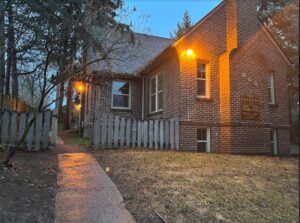
The B.L. and Vesta Steele House, known as Casa Latina, is located on 955 NE B St. It was listed for $559,000 / Photo by Jayce Carral
The Harold E. and Helen B. Culver House was built in 1927 when Harold served as the head of the geology department and is located at 975 NE B St. It was designated as the Native American Culture and Heritage House. The house has not been listed yet.
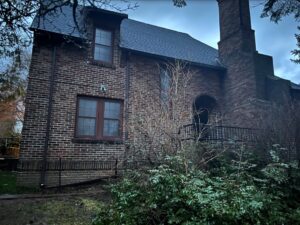
The Harold E. and Helen B. Culver House is located at 975 NE B St. It received water damage in fall 2018. The house has not been listed yet / Photo by Jayce Carral
The three houses were designed by WSU’s main architect at the time, Stanley Smith, and are located within Pullman’s Historic District, which was established 2006 and covers 23.7 acres of land. The district is noted on the state’s national register and is a ceremonial honor rather than one that preserves any of the properties within it, Houser said.
Outside of the historical district stands the Jack and Catherine Friel House, which was the last house WSU acquired. The “Friel” house, located at 905 NE C St., is dedicated to Asian American and Pacific Islander students. The house was listed for $559,000. WSU bought it for $236,000 in 2004.
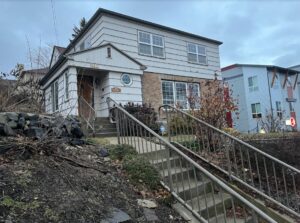
The Jack and Catherine Friel House, dedicated to Asian American and Pacific Islander students, is located at 905 NE C St. It was listed for $559,000 / Photo by Jayce Carral
The Native American Culture and Heritage House was closed in fall 2018 after it was water damaged. The other three houses were closed in fall 2019, according to the meeting agenda.
ON THE MARKET
Even at the current half a million price point for each house, WSU will still be losing money as it bought the properties for $1.3 million and spent $1.5 million on maintenance.
The houses are being managed by a broker who is licensed in Washington and Idaho, Weiler said. The Native American Heritage House is not in a condition to be sold so it will be undergoing some maintenance.
Future plans for the houses are unclear. Any possible renovations and demolitions will be decided by new buyers unless WSU pulls them off the market.
“We can’t play favorites as a public agency,” Weiler said. “Anybody who is interested in the homes, we’ll be happy to sell [to].”
He said the university does not have any opinion of what would become of the houses after they are sold.
If demolition does occur, there are some restrictions to what could replace them.
Zoning laws are used to restrict what can or cannot be built on certain pieces of land based on their zoning designation. According to the City of Pullman, the Native American Culture and Heritage House is classified as R2, which is for low density, multi-family residential units. A new construction on the property can be for a single family, like a regular house, or a residential building that can fit only up to 8 units on the property.
The other three houses are classified as R4, which is for high-density, multi-family residential units. The properties can hold as many units as its density allows, as long as each unit is between 1,000-4,500 square units. But it is possible for property owners to petition the city for a zoning change.
Robert McCoy, associate professor in WSU’s Department of History, led the nomination for national recognition of Pullman’s Historic District, which includes the three houses on B Street.
“Buildings have spirits of their own. People live in them and they become part of people’s memory; some of that is transient and some of it is more embedded within communities,” McCoy said. “When you lose certain parts of that, you’re losing part of the memory of those places.”
——
Jayce Carral is a journalism student at the Edward R. Murrow College of Communication.

